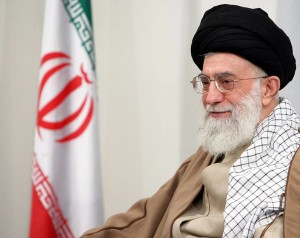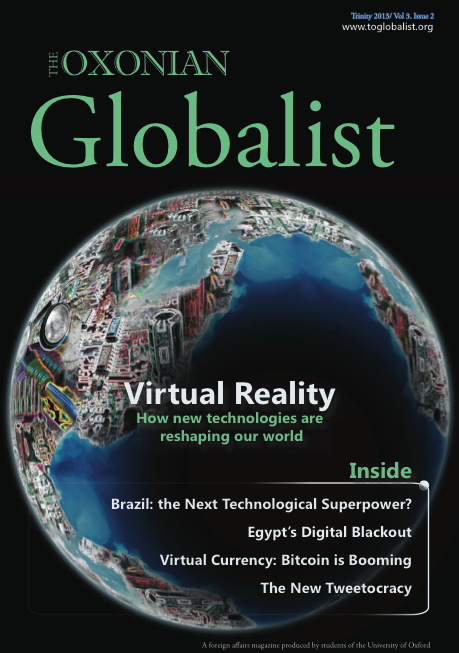
Supreme Leader Ayatollah Ali Khamenei: A unity figure, or a growing target of discontent? Photo by DragonFire1024 via Wikipedia
Tensions over Iran’s nuclear energy programme have reached the breaking point. Key advisers within the Obama administration have openly declared September or October a “sweet spot” for an Israeli unilateral strike against Iran, although American and European leaders still hope that sanctions will bring Iran to its knees and force the country to drop its nuclear ambitions. In response to international pressure, the Iranian regime has alternated between clumsy threats of force and empty promises to negotiate in good faith.
The muddled signals coming from Tehran reflect the domestic fight between President Mahmoud Ahmadinejad and the Supreme Leader Ayatollah Ali Khamenei, who, as theocrat-in-chief, is appointed for life. The conflict between the two leaders is tearing apart the regime’s leadership and the conservative alliance which, after the 2009 presidential elections, united to crush a popular uprising and remove the reformists from government.
Now, the president’s men are the victims of the same brutal oppression. In February 2012, Ali Akbar Javanfekr, Ahmadinejad’s chief media advisor and head of a leading newspaper, was sentenced to six months in prison. Security forces under the direction of Iran’s supreme leader had previously arrested Javanfekr last November, attacking his office with tear gas canisters and beating employees inside the stairwell. He was freed after the president made an angry phone call, demanding his immediate release.
Divided Defiance
This vicious attack on such a close presidential aide highlights both the parallel nature of Iran’s power structure and the depth of divisions which threaten to bring different branches of government into open conflict. Javanfekr’s arrest also points to key ideological differences between Ahmadinejad’s coterie of lay conservatives, and the religious hard-liners dominated by the clergy.
Javanfekr has been charged with insulting the Supreme Leader before, but his most recent arrest comes after an interview where he stated that the hard-liners had lost touch with the people, and called for reconciliation with the reformist opposition. Divisions between Ahmadinejad and Khamenei first came to the fore in spring 2011, when Khamenei forced the resignation Esfandiar Mashaei, Ahmadinejad’s vice president, son-in-law, and close confidante. Ahmadinejad shocked conservative opinion among Iran’s leadership when he reappointed Mashaei as his chief of staff, openly defying the Supreme Leader’s orders.
Khamenei and other conservative leaders in Iran lambasted Mashaei as the chief exponent of a “deviant current” in Iranian politics set on insidiously undermining the Islamic Republic. Mashaei, an eccentric millenarian with a penchant for Iranian pop singers in exile, drew conservative ire for promoting a form of religiously inspired nationalism – “Iranian Islam” – that challenges clerical power and regime orthodoxy.
All the President’s Men
The conflict between the president’s and the leader’s men had first erupted into the open in April, 2011 when Khamenei, in an unprecedented move, reinstated Heydar Moslehi as Minister of Intelligence after Ahmadinejad had dismissed him from cabinet just days before.
President Ahmadinejad was furious and promptly left on a ‘tour of the provinces,’ sulking in Tehran’s environs. For a dozen days he refused to appear in cabinet or even at the presidential palace until publicly summoned back by the “blessed guide.” Both men denied there had been any falling out between the two of them, blaming the misleading news on the work of foreign “propaganda machines.”
But the campaign against the president’s men has continued, with tens of his aides and associates arrested on charges of corruption and sedition. The judiciary, a bastion of hard-liners which tends to equate the rule of law with the leader’s diktat, has relentlessly pursued these men on any pretext. Mashaei, who has claimed to be in direct contact with the Shi’a Islam’s chief messianic figure, the Hidden Imam, was charged with sorcery.
While Western media often portray Ahmadinejad as an Islamist extremist and militant anti-Semite, he- like presidents Rafsanjani and Khatami before him – has repeatedly clashed with Iran’s religious leadership. Khamenei, it seems, has tired of this essential pattern: he hinted in a speech late last year that he may support abolishing the presidency, replacing it with a prime minister answerable to him.
Conflict and Change
The Supreme Leader has the power to do what he wants, but the danger for him lies in overplaying his hand. Already, the hard-liners have disqualified over thirty serving members of parliament from running for re-election, further provoking moderate opinion. Since his intervention in the 2009 presidential elections on Ahmadinejad’s behalf, Khamenei has taken on a more visible role in politics, exposing himself to unprecedented public criticism and becoming a target for public discontent.
For now, the situation shows every sign of being to the leader’s advantage. Both Ahmadinejad’s incompetence in government and the confrontation with the West divert attention away from the regime’s failing legitimacy. At home and abroad, ‘controlled conflict’ seems to be the order of the day for the leader and his allies, as they fight against both internal and external pressures for change.
The Islamic Republic’s frequently inscrutable foreign policy might appear to be a strategic game of cat-and-mouse. The reality, however, may be a simple reflection of Iran’s deeply divided domestic politics – an angle too frequently ignored in discussions of the Iranian regime.



